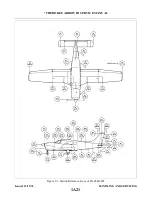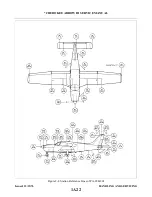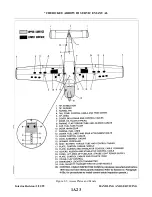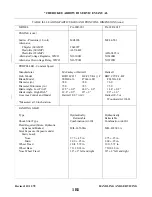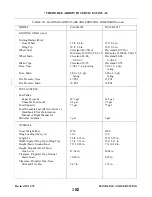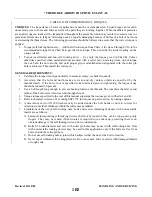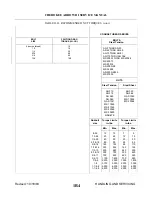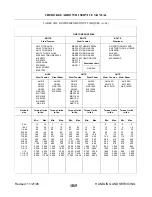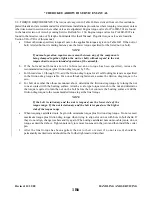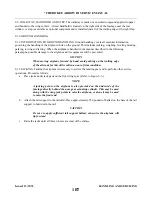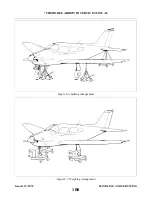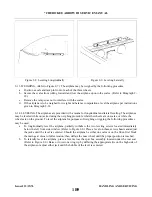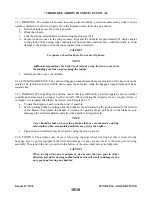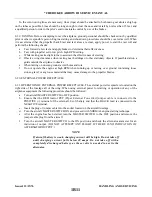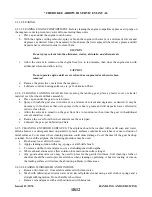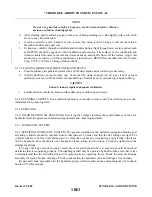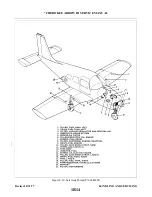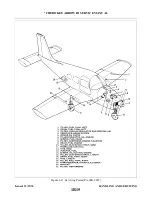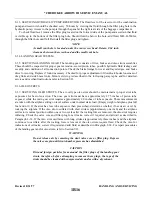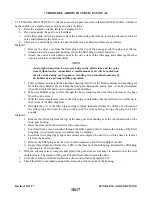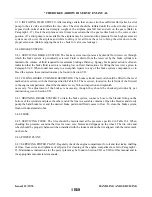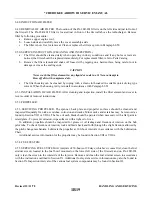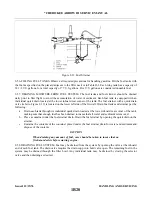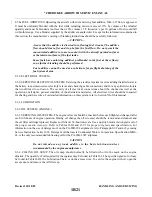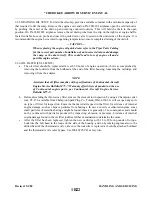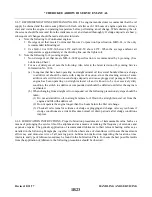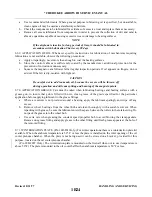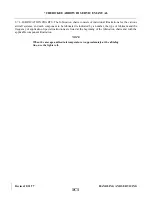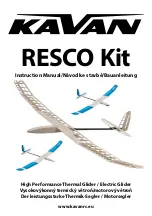
In the event towing lines are necessary, lines (rope) should be attached to both main gear struts as high up
on the tubes as possible. Lines should be long enough to clear the nose and/or tail by not less than 15 feet, and
a qualified person to ride in the pilot’s seat to maintain control by use of the brakes.
2-19. TAXIING. Before attempting to taxi the airplane, ground personnel should be checked out by qualified
pilot or other responsible person. Engine starting and shut-down procedures should be covered as well. When
it is ascertained that the propeller back blast and taxi areas are clear, apply power to start the taxi roll and
perform the following checks:
a.
Taxi forward a few feet and apply brakes to determine their effectiveness.
b. Taxi with propeller set in low pitch, high RPM setting.
c.
While taxiing, make slight turns to ascertain the effectiveness of steering.
d. Observe wing clearances when taxiing near buildings or other stationary objects. If possible station a
guide outside the airplane to observe.
e.
When taxiing on uneven ground, avoid holes and ruts.
f.
Do not operate the engine at high RPM when running up or taxiing over ground containing loose
stones, gravel or any loose material that may cause damage to the propeller blades.
2-20. EXTERNAL POWER RECEPTACLE.
2-21. OPERATION OF EXTERNAL POWER RECEPTACLE. The external power receptacle is located on the
right side of the fuselage aft of the wing. When using external power for starting or operation of any of the
airplanes equipment the following procedure should be followed:
a.
Turn aircraft MASTER SWITCH to OFF position.
b. Ensure that the RED lead of PEP (Piper External Power) kit jumper cable is connected to the
POSITIVE (+) terminal of the external 12-volt battery and that the BLACK lead is connected to the
NEGATIVE terminal.
c.
Insert the plug of jumper cable into the socket located on the aircraft fuselage.
d. Turn the aircraft MASTER SWITCH ON and proceed with NORMAL engine starting technique
e.
After the engine has been started, turn the MASTER SWITCH to the OFF position and remove the
jumper cable plug from the aircraft.
f.
Turn the aircraft MASTER SWITCH to the ON position and check the alternator ammeter for an
indiction of output. (DO NOT ATTEMPT ANY FLIGHT IF THERE IS NO INDICATION OF
ALTERNATOR OUTPUT.)
NOTE
If aircraft battery is weak, charging current will be high. Do not take off
until charging current falls below 20 amps. Do not take off with a
completely discharged battery as three volts is needed to excite the
alternator.
Issued: 12/15/76
1B11
*CHEROKEE ARROW III SERVICE MANUAL
HANDLING AND SERVICING
Summary of Contents for ARROW III
Page 4: ...THIS PAGE INTENTIONALLY LEFT BLANK 1A4...
Page 12: ...THIS PAGE INTENTIONALLY LEFT BLANK 1A12...
Page 94: ...Figure 4 2 Wing Installation Revised 2 13 89 1D22 CHEROKEE ARROW III SERVICE MANUAL STRUCTURES...
Page 171: ...lH3 INTENTIONALLY LEFT BLANK...
Page 172: ...lH4 INTENTIONALLY LEFT BLANK...
Page 286: ...THIS PAGE INTENTIONALLY LEFT BLANK Revised 2 13 89 2A8...
Page 528: ...INTENTIONALLY LEFT BLANK 2K10 THRU 2L24 2K10...

